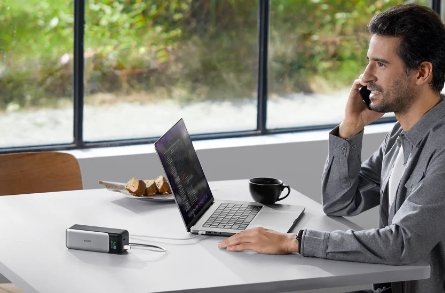
Traveling with electronic devices has become an essential part of modern life. Whether you're heading to a business meeting or embarking on a family vacation, keeping your devices charged is crucial. However, when it comes to air travel, power banks are subject to specific restrictions that every traveler should be aware of. These rules are in place to ensure the safety of all passengers and crew members. In this article, we will explore the regulations surrounding power bank on flight, including capacity limits, packing guidelines, and safety certifications, to help you travel with confidence.

Capacity Limits: How Much Power is Allowed on Flights?
Watt-Hour (Wh) Calculation and Legal Limits
Understanding the capacity of your power bank is essential before you board a flight. The capacity of power banks is measured in watt-hours (Wh), which is a unit of energy. To calculate the watt-hour rating of your power bank, you can use the formula: Wh = (mAh × V) / 1000, where mAh is the milliampere-hour rating and V is the voltage. Most airlines allow power banks with a capacity of up to 100Wh without any special permissions. For power banks between 100Wh and 160Wh, you may need prior approval from the airline. Power banks exceeding 160Wh are generally prohibited on flights. For example, a typical Anker power bank with a capacity of 20,000mAh and 5V output would have a watt-hour rating of 100Wh, making it compliant with most airline regulations.
Differences Between Domestic and International Flights
While the general rules for power banks are similar across most airlines, there can be slight variations between domestic and international flights. Domestic flights within the same country often follow the guidelines set by the national aviation authority, which may be more lenient or stricter depending on the region. International flights, on the other hand, must adhere to the regulations of both the departure and arrival countries, as well as any countries the flight may pass through. For instance, a power bank that is allowed on a domestic flight in the United States might not be permitted on an international flight to Europe if it exceeds the European Union's stricter limits. Always check the specific regulations of the airline and the countries involved before you travel.

Carry-On vs. Checked Luggage: Where Should You Pack the Power bank?
Why Power Banks Must Be in Carry-On Bags
One of the most important rules when traveling with a power bank is that it must be packed in your carry-on luggage, not in your checked baggage. This rule is in place because lithium-ion batteries, which are commonly used in power banks, pose a fire risk if they are damaged, short-circuited, or exposed to extreme temperatures. In the cabin, flight attendants can quickly respond to any issues that may arise, whereas a fire in the cargo hold could go unnoticed until it's too late. For example, if you're traveling with an Anker power bank, make sure it's in your carry-on bag, along with your other essential electronics like your laptop and smartphone.
Risks of Packing Power Banks in Checked Luggage
Packing a power bank in your checked luggage is not only against airline regulations but also highly risky. The cargo hold of an airplane is not equipped to handle potential battery fires, which can be exacerbated by changes in pressure and temperature during the flight. Additionally, if your checked luggage is subjected to rough handling, the power bank could be damaged, increasing the risk of a short circuit or fire. Imagine arriving at your destination only to find that your luggage has been delayed or, worse, that your power bank has caused a safety incident. To avoid these risks, always keep your power bank in your carry-on bag where it can be monitored and accessed if needed.
Safety Regulations: What Certifications Are Required?
When purchasing a power bank, it's crucial to ensure that it meets the necessary safety certifications. Look for certifications such as CE (Conformité Européenne), FCC (Federal Communications Commission), and RoHS (Restriction of Hazardous Substances). These certifications indicate that the power bank has been tested for safety and compliance with international standards. For example, Anker power banks are known for their high-quality build and adherence to these safety standards, making them a reliable choice for travelers. Additionally, some airlines may require that your power bank has a UN38.3 certification, which is a specific test for lithium-ion batteries to ensure they are safe for air travel. Always check the product specifications and look for these certifications before making a purchase.
Practical Tips: How to Travel with Power Banks Safely
Traveling with a power bank doesn't have to be stressful if you follow a few practical tips. First, always check the capacity of your power bank and ensure it complies with airline regulations. If you're unsure, use the watt-hour calculation mentioned earlier to determine if your power bank is within the allowed limits. Second, pack your power bank in your carry-on luggage and avoid placing it in checked baggage. Third, make sure your power bank is fully charged before your flight, as some airlines may require you to demonstrate that it is functional. Fourth, consider investing in a high-quality power bank like those from Anker, which are designed with safety and durability in mind. Finally, always carry the original packaging or documentation that shows the power bank's specifications and certifications, as this can be useful if you need to prove its compliance with airline regulations.
Conclusion
Understanding the rules and regulations surrounding power banks on flights is essential for any traveler. Not only does it ensure that you comply with airline safety standards, but it also helps you avoid potential delays or confiscations at security checkpoints. By knowing the capacity limits, packing guidelines, and necessary certifications, you can travel with confidence and peace of mind. Whether you're a frequent flyer or an occasional traveler, taking the time to understand these rules will make your journey smoother and safer. In this article, we've covered everything you need to know about traveling with power banks, from calculating watt-hours to choosing the right carry-on bag, so you can focus on enjoying your trip.